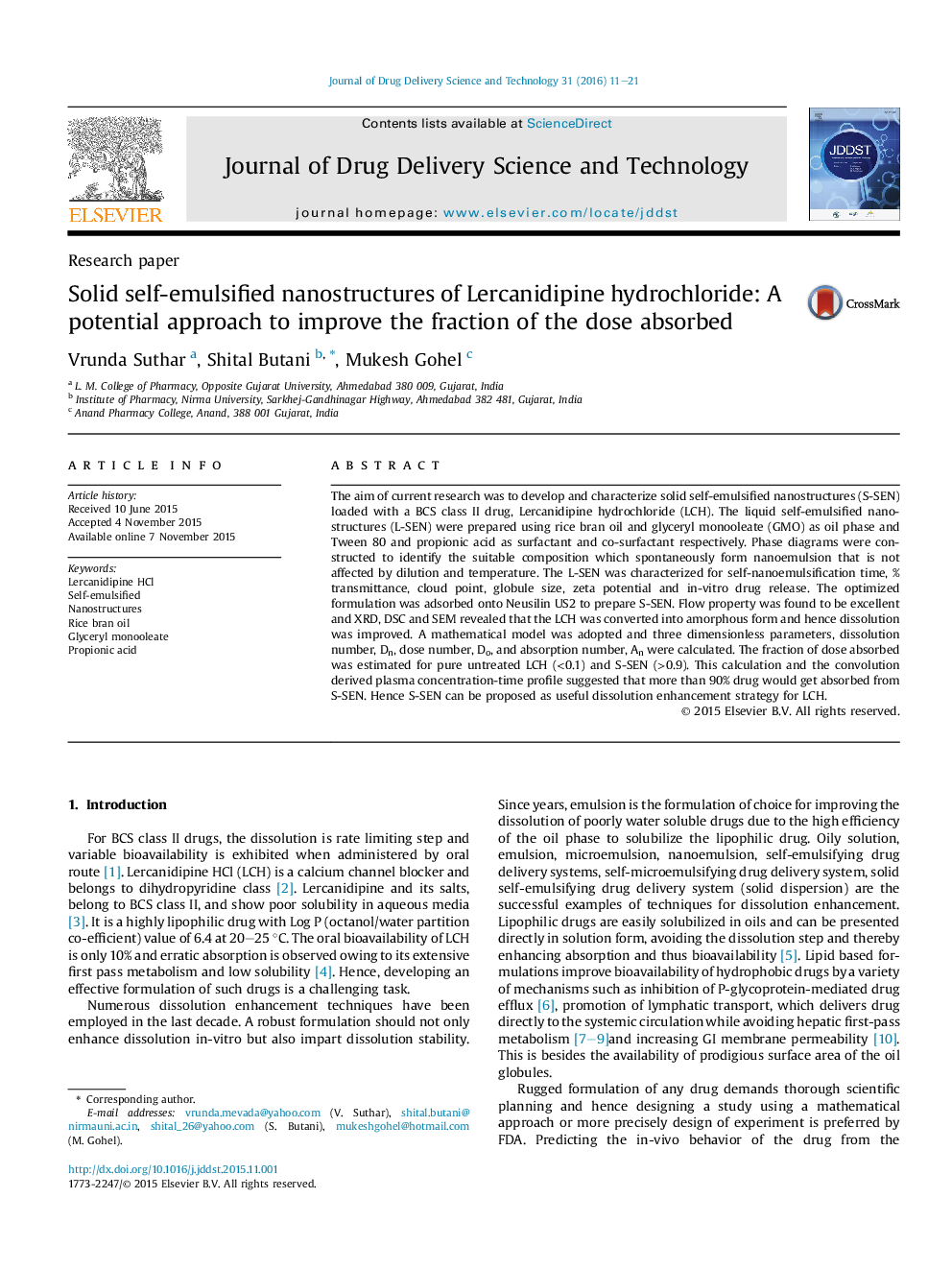| کد مقاله | کد نشریه | سال انتشار | مقاله انگلیسی | نسخه تمام متن |
|---|---|---|---|---|
| 2483074 | 1556472 | 2016 | 11 صفحه PDF | دانلود رایگان |

The aim of current research was to develop and characterize solid self-emulsified nanostructures (S-SEN) loaded with a BCS class II drug, Lercanidipine hydrochloride (LCH). The liquid self-emulsified nanostructures (L-SEN) were prepared using rice bran oil and glyceryl monooleate (GMO) as oil phase and Tween 80 and propionic acid as surfactant and co-surfactant respectively. Phase diagrams were constructed to identify the suitable composition which spontaneously form nanoemulsion that is not affected by dilution and temperature. The L-SEN was characterized for self-nanoemulsification time, % transmittance, cloud point, globule size, zeta potential and in-vitro drug release. The optimized formulation was adsorbed onto Neusilin US2 to prepare S-SEN. Flow property was found to be excellent and XRD, DSC and SEM revealed that the LCH was converted into amorphous form and hence dissolution was improved. A mathematical model was adopted and three dimensionless parameters, dissolution number, Dn, dose number, Do, and absorption number, An were calculated. The fraction of dose absorbed was estimated for pure untreated LCH (<0.1) and S-SEN (>0.9). This calculation and the convolution derived plasma concentration-time profile suggested that more than 90% drug would get absorbed from S-SEN. Hence S-SEN can be proposed as useful dissolution enhancement strategy for LCH.
Figure optionsDownload as PowerPoint slide
Journal: Journal of Drug Delivery Science and Technology - Volume 31, February 2016, Pages 11–21